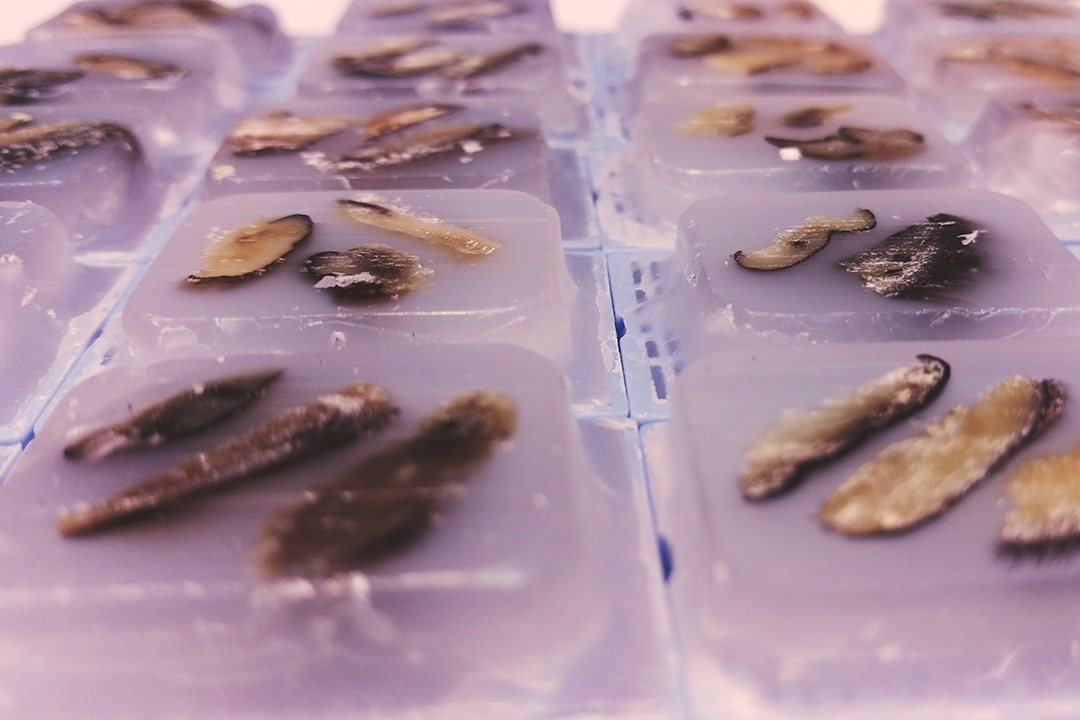The conditions surrounding Sable Island horses have long interested scientists, offering them a glimpse into natural herd hierarchy, island ecology and genetic drift. A team at the Western College of Veterinary Medicine (WCVM) is particularly interested in what this herd may be harbouring within their thick, weather-beaten skin.
For the past few years, WCVM veterinary pathologist Dr. Bruce Wobeser has been exploring the connection between papillomavirus (PV) and the development of skin tumours in horses. PV is a virus with many strains that affects most animal species. Human papillomavirus (HPV) is the most well known as the cause of cervical cancer in women.
“PV is a virus that affects the skin and causes rapid growth of skin cells. That growth can become transformed into a cancer and that’s what we think we see in human cervical cancer, for example,” Wobeser explains.
“Most of the time, when people or animals get infected, they develop an immune response and nothing happens. Rarely that immune response is delayed and they develop a papilloma or a wart, and even more rarely, that immune response is so delayed that you get a tumour or cancer development. So while lots are exposed, very few develop cancer.”
Wobeser and his graduate student, Dr. Sarah Greenwood, have been working together to determine how common the virus is in the domestic horse population. When Dr. Todd Shury, a veterinarian with Parks Canada who is based at the WCVM, planned a trip to Sable Island, N.S., this spring, a unique opportunity presented itself to Wobeser.
“I approached Bruce and said, ‘I know you have a research interest in skin diseases in horses. Do you want some samples?’” explains Shury, whose trip to Sable Island was supported by Dr. Phil McLoughlin, a researcher in the University of Saskatchewan’s biology department. “That’s the great thing about working in a vet college. I can go have these hallway conversations with people. A lot of research projects start that way.”
Wobeser was particularly interested in the status of PV in the island’s horses.
“We were working on Sarah’s project on prevalence,” says Wobeser. “It occurred to me that Sable Island was a unique environment and so it would make a nice contrast with this wild, free-ranging horse population to see what the natural history of the disease would be like without human intervention. If it’s different, [or] if it’s not different.”
Ancestors of the Sable Island horses were brought to pasture on this small island back in the mid-1700s. Now numbering upwards of 500 head, the feral horses have thrived for more than 200 years among the fog and the sandy dunes.
"It’s a really unique place,” Shury says. “It’s such a simple ecosystem: a 40-kilometre long sandbar, limited vegetation and one herbivore. And no predators.”
Harsh winter conditions and deep sand have left these animals with shaggy coats and characteristically curved hooves, but no overt disease appears to affect the herd.
During his time on the island this spring, Shury collected skin samples from 25 equine carcasses found on the sandy beaches of Sable Island. WCVM parasitologist Dr. Emily Jenkins and several graduate students from McLoughlin's lab group helped him with the task.
The samples were then put into preservative and brought back to Saskatoon where Wobeser’s team fixed them into blocks of paraffin wax.
The researchers began the challenge of hunting for potential traces of PV in the samples — but identifying the virus was not a simple task. Without any reliable external indicators of disease to work from, the team set out to isolate the presence of viral DNA in the Sable Island equine tissue samples.
Through a series of chemical steps, the research team successfully extracted and replicated DNA in the lab. They used another protocol to test this DNA for the virus with primers specially designed to recognize a common sequence in PV.
The team did not find papillomavirus in any of the Sable Island samples. On a small island with a limited population, Wobeser says it’s possible that there is no PV.
“Whether there was nobody shedding or nobody had PV when they arrived on the island … or whether it’s such a small group that everyone has been infected and has developed an immune response to it and therefore there’s no susceptible animals anymore — that’s possible, too.”
Since the samples were collected from horses that died of exposure or old age, the project’s small sample size may not be representative of the entire population of the island.
Using a statistical algorithm based on data collected by this study, the maximum prevalence that PV could exist within the herd is 13.7 per cent. Compared to studies on the local domestic population in Western Canada where PV is estimated to occur in about 30 per cent of horses, PV appears to occur at a significantly lower rate in the Sable Island herd.
This difference could be due to any number of reasons surrounding the wild herd and warrants further investigation.
Regardless, this Sable Island project is another step towards understanding PV in horses. Through continued research, the team at WCVM hopes to shed light on a virus that affects a wide range of species — including humans.
Jane Westendorf of Mission, B.C., is a second-year veterinary student who was part of the WCVM’s Undergraduate Summer Research and Leadership program in 2017. She was also the Townsend Equine Health Research Fund summer research student and a Merial Veterinary Scholar. Jane’s story is part of a series of stories written by WCVM summer research students.
